Design and Analysis of Orthogonal Polarization Point Diffraction Pinhole Plate
Abstract
1. Introduction
2. Principle of the OP-PDPP
2.1. Point Diffraction Interference Systems
2.2. Theoretical Model of the OP-PDPP
3. Simulation Model and Analysis OP-PDPP Based on FDTD
3.1. OP-PDPP Film Layer Material and Thickness Selection
3.2. OP-PDPP Pinhole Size Selection
- (1)
- The effect of pinhole diameter on the diffraction aperture angle
- (2)
- The effect of pinhole diameter on the quality of diffracted wavefront
- (3)
- Effect of pinhole diameter on polarization performance
3.3. OP-PDPP Line Grid Period and Duty Cycle Selection
4. Experimental Results and Analysis
- A. Processing of OP-PDPP
- B. Experiment optical path construction
- C. Image Acquisition and Processing
5. Conclusions
Author Contributions
Funding
Institutional Review Board Statement
Informed Consent Statement
Data Availability Statement
Conflicts of Interest
References
- Levinson, H.J. High-NA EUV lithography: Current status and outlook for the future. Jpn. J. Appl. Phys. 2022, 61, SD0803. [Google Scholar] [CrossRef]
- van de Kerkhof, M.; Benschop, J.; Banine, V. Lithography for now and the future. Solid State Electron. 2019, 155, 20–26. [Google Scholar] [CrossRef]
- Ma, Z. The Progress and the State-of-Art Facilities of Inertial Confinement Fusion. J. Phys. Conf. Ser. 2022, 2386, 12057. [Google Scholar] [CrossRef]
- Xiao, Q.; Wu, S.; Wang, Y.; Liu, C.; Feng, W.; Yao, Y.; Huang, P.; Wang, X.; Lu, Q. Error analysis and realization of a phase-modulated diffraction grating used as a displacement sensor. Opt. Express 2023, 31, 7907–7921. [Google Scholar] [CrossRef]
- Lu, Q.; Xiao, Q.; Liu, C.; Wang, Y.; Zhu, Q.; Xu, M.; Wang, X.; Wang, X.; Huang, W. Inverse design and realization of an optical cavity-based displacement transducer with arbitrary responses. Opto Electron. Adv. 2023, 6, 220018. [Google Scholar] [CrossRef]
- Li, D.; Wang, R.; Zhang, X. Optical elements based on phase measurement deflection technique. J. Appl. Opt. 2020, 41, 13. [Google Scholar]
- Hou, X.; Zhang, S.; Hu, X.; Quan, H.; Wu, G.; Jia, X.; He, Y.; Chen, Q.; Wu, F. The research progress of surface interferometric measurement with higher accuracy. Opto Electron. Eng. 2020, 47, 200209. [Google Scholar]
- Zhou, Y.; Chang, L.; He, T.; Yu, Y. Detection technology of ultra-precision planar optical elements. Chin. J. Nat. 2023, 45, 157–176. [Google Scholar]
- Lu, Z.; Jin, C.; Zhang, L.; Wang, L. Mass analysis of wavefront by three-dimension pinhole vector diffraction in extreme ultraviolet. Acta Opt. Sin. 2010, 10, 2849–2854. [Google Scholar]
- Lu, Z.; Jin, C.; Ma, D.; Zhang, H. Effect of tiny hole deviation on far-field wavefront quality. Acta Opt. Sin. 2011, 31, 0812002. [Google Scholar]
- Chen, Y.; Bai, J.; Wang, C.; Xue, Y.; Yang, Y. Comparison of Fiber-to-Waveguide Couplers in Point Diffraction Interferometer Based on Waveguide Reference Wavefront Source. Appl. Sci. 2020, 10, 9115. [Google Scholar] [CrossRef]
- Otaki, K.; Bonneau, F.; Ichihara, Y. Absolute measurement of a spherical surface using a point diffraction interferometer. In Proceedings of the Optical Engineering for Sensing and Nanotechnology (ICOSN’99), Yokohama, Japan, 7 May 1999; pp. 602–605. [Google Scholar]
- Gong, Q.; Eichhorn, W. Alignment and testing of piston and aberrations of a segmented mirror. In Proceedings of the Optics and Photonics 2005, San Diego, CA, USA, 19 August 2005; p. 586912. [Google Scholar]
- Zhou, X.; Guo, R.; Zhu, W.; Zheng, D.; Chen, L. Dynamic wavefront measurement with a pinhole linear polarizer point-diffraction interferometer. Appl. Opt. 2017, 56, 8040–8047. [Google Scholar] [CrossRef]
- Yeh, P. Extended Jones matrix method. J. Opt. Soc. Am. 1982, 72, 507–513. [Google Scholar] [CrossRef]
- Dhatt, G.; Lefrançois, E.; Touzot, G. Finite Element Method; John Wiley & Sons: Hoboken, NJ, USA, 2012. [Google Scholar]
- Sullivan, D.M. Electromagnetic Simulation Using The FDTD Method; IEEE Press: Piscataway, NJ, USA, 2013; pp. 1–19. [Google Scholar]
- Lehmkuhl, D. The Equivalence Principle (s). In The Routledge Companion To Philosophy of Physics; Routledge: London, UK, 2021; pp. 125–144. [Google Scholar]
- Ramadan, O. Unsplit-Field PML Algorithm for Truncating Nonlinear FDTD Domains. Int. J. Infrared Millim. Waves 2005, 26, 1151–1161. [Google Scholar] [CrossRef]
- Yu, Z. A simple and effective method for the reflection coefficient extraction in rectangular waveguide discontinuity analysis by the FDTD. Microw. Opt. Technol. Lett. 1997, 15, 57–59. [Google Scholar] [CrossRef]
- Ma, Q.; Liu, W.; Li, X.; Kang, Y.; Wei, Z.; Feng, R.; Liu, H. Analysis of wavefront error of pinhole diffraction in point diffraction interferometer. Acta Opt. Sin. 2008, 28, 2321–2324. [Google Scholar]
- Lu, Q.; Liu, C.; Feng, W.; Xiao, Q.; Wang, X. Deep learning optical image denoising research based on principal component estimation. Appl. Opt. 2022, 61, 4412–4420. [Google Scholar] [CrossRef]
- Zhang, Z.; Wang, X.; Liu, C.; Han, Z.; Xiao, Q.; Zhang, Z.; Feng, W.; Liu, M.; Lu, Q. An efficient and robust phase unwrapping method based on SFNet. Opt. Express 2024, 32, 15410–15432. [Google Scholar] [CrossRef]
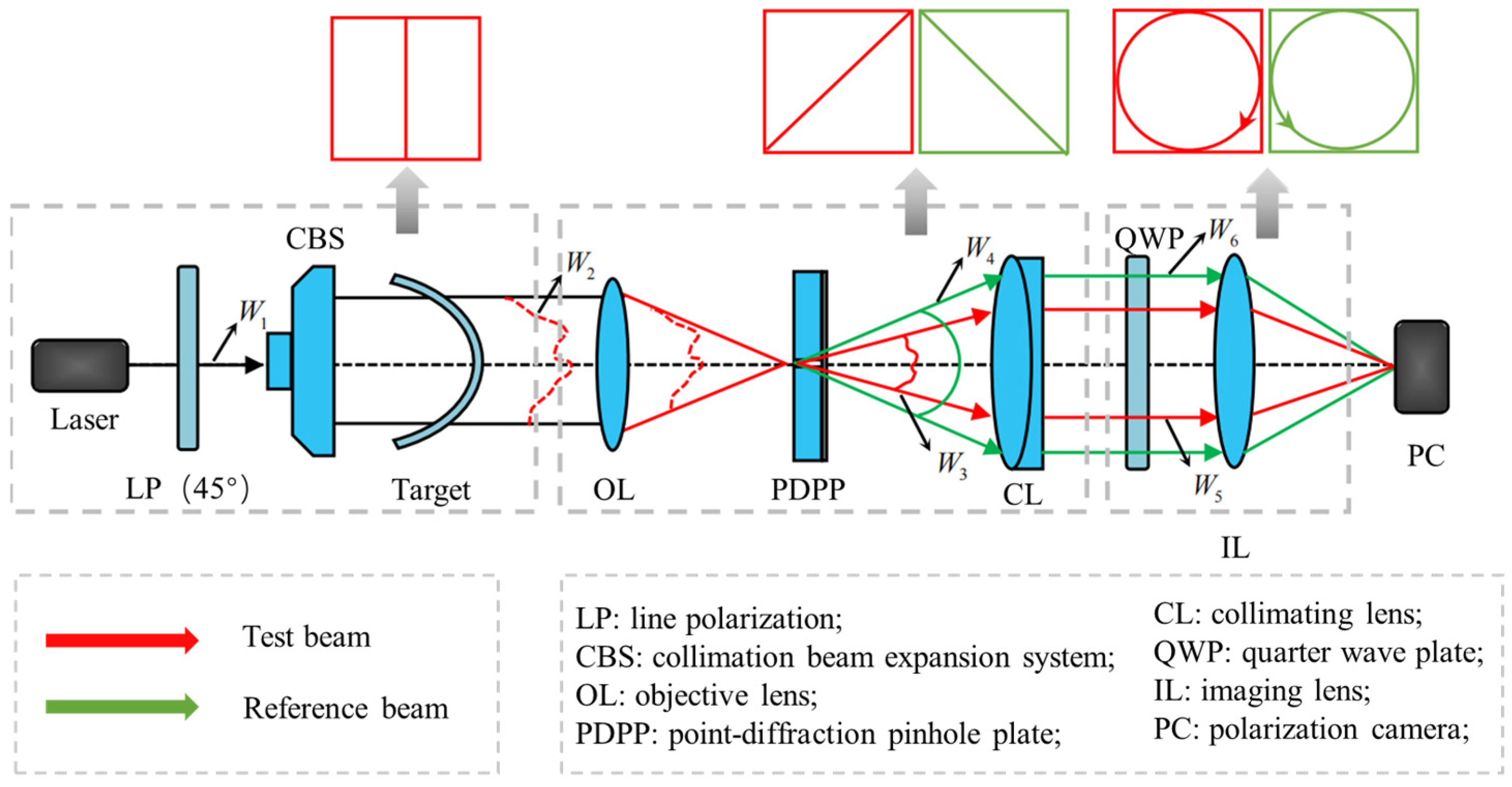
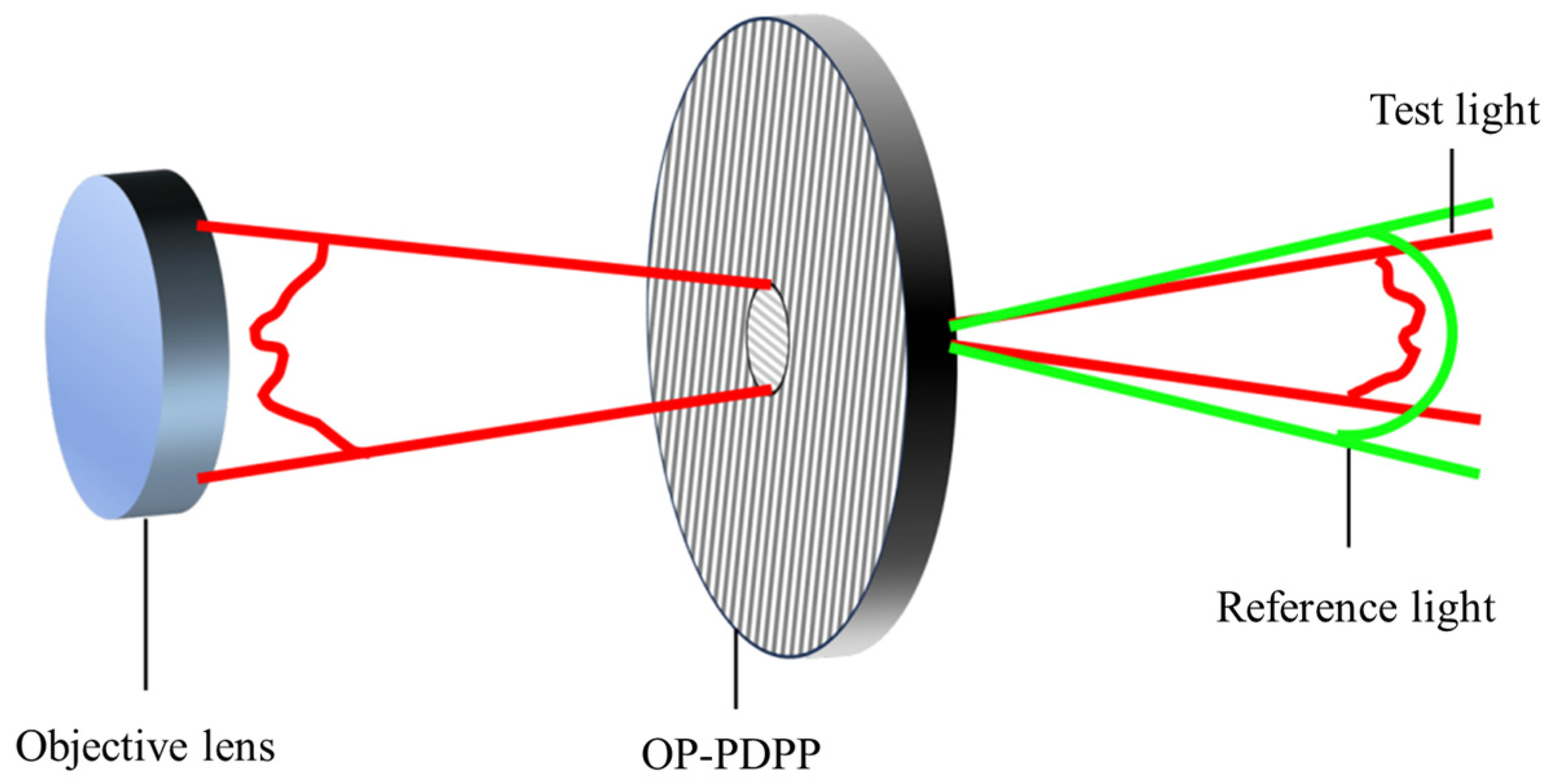


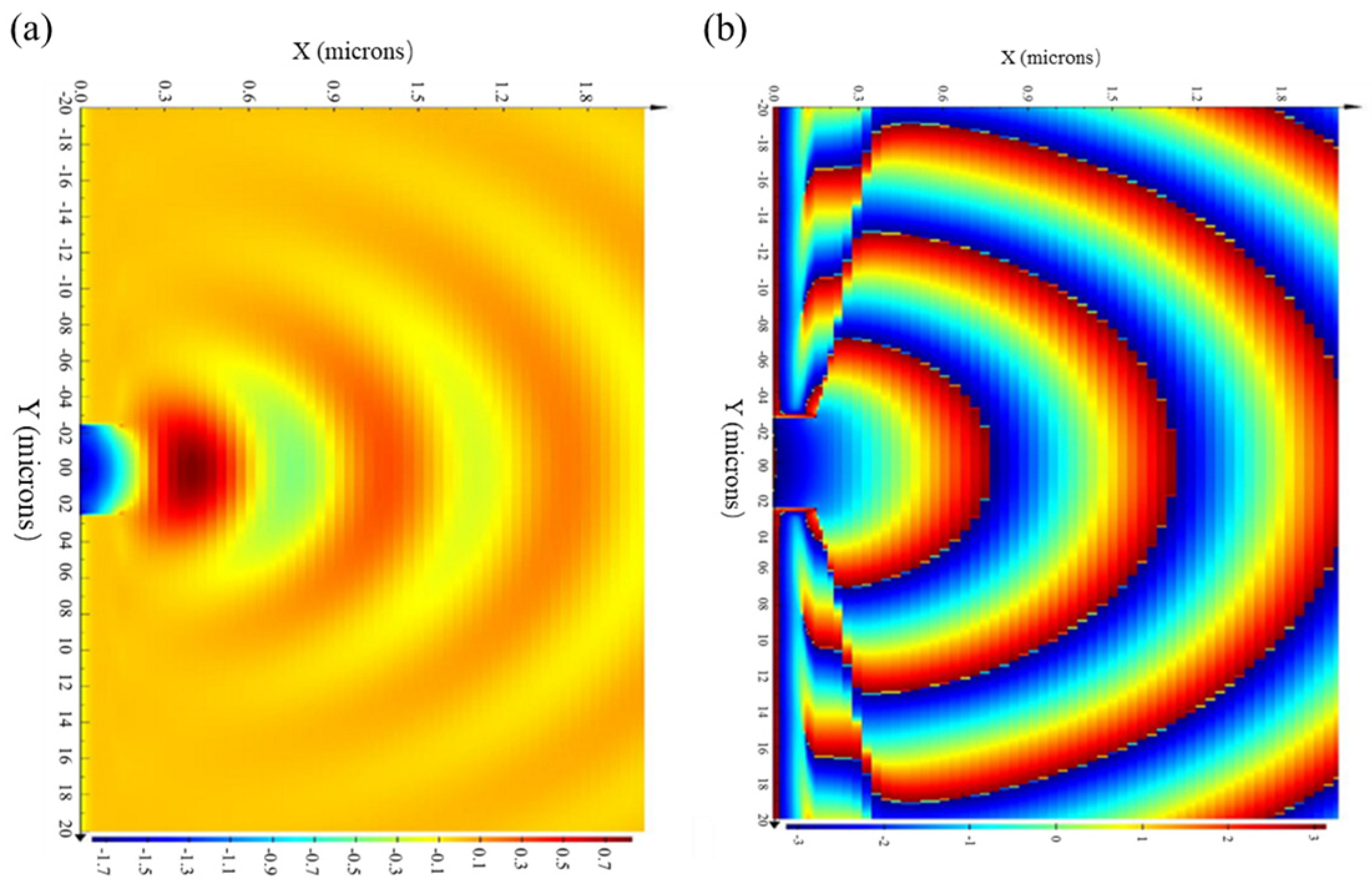

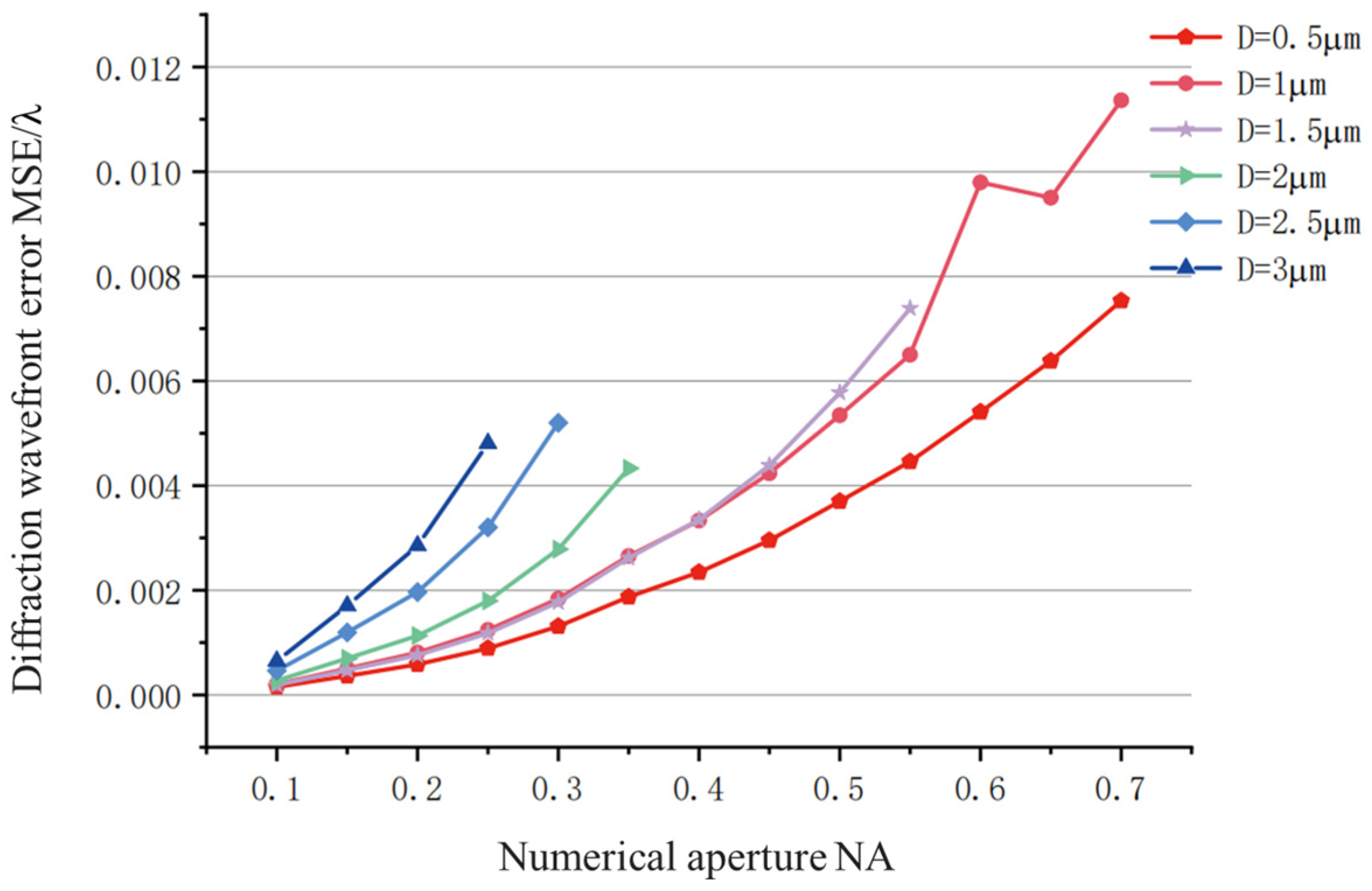

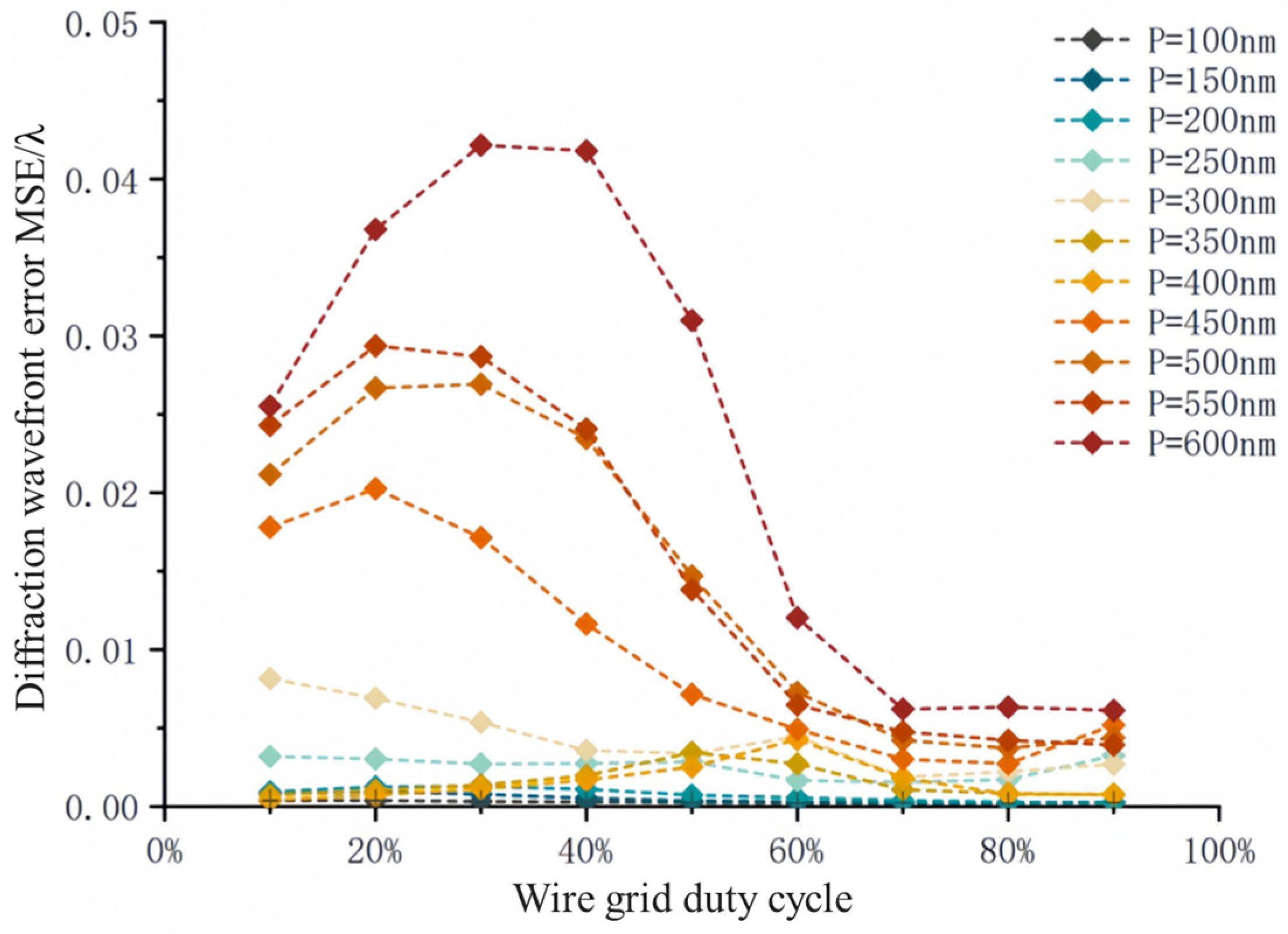
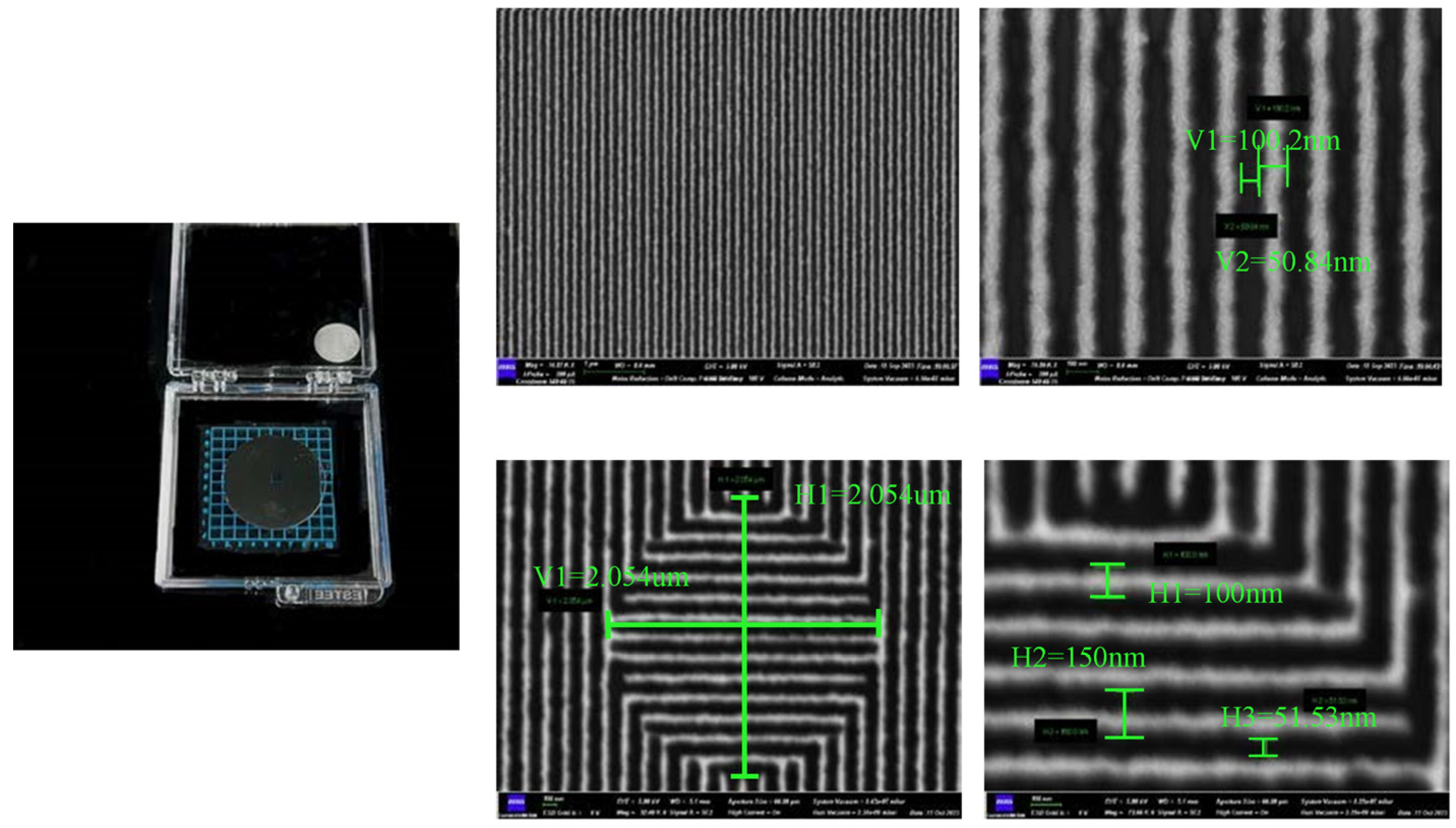



Disclaimer/Publisher’s Note: The statements, opinions and data contained in all publications are solely those of the individual author(s) and contributor(s) and not of MDPI and/or the editor(s). MDPI and/or the editor(s) disclaim responsibility for any injury to people or property resulting from any ideas, methods, instructions or products referred to in the content. |
© 2024 by the authors. Licensee MDPI, Basel, Switzerland. This article is an open access article distributed under the terms and conditions of the Creative Commons Attribution (CC BY) license (https://creativecommons.org/licenses/by/4.0/).
Share and Cite
Han, Z.; Feng, W.; Zhang, Z.; Lu, Q. Design and Analysis of Orthogonal Polarization Point Diffraction Pinhole Plate. Photonics 2024, 11, 602. https://doi.org/10.3390/photonics11070602
Han Z, Feng W, Zhang Z, Lu Q. Design and Analysis of Orthogonal Polarization Point Diffraction Pinhole Plate. Photonics. 2024; 11(7):602. https://doi.org/10.3390/photonics11070602
Chicago/Turabian StyleHan, Ziyu, Wenlu Feng, Zhilin Zhang, and Qianbo Lu. 2024. "Design and Analysis of Orthogonal Polarization Point Diffraction Pinhole Plate" Photonics 11, no. 7: 602. https://doi.org/10.3390/photonics11070602
APA StyleHan, Z., Feng, W., Zhang, Z., & Lu, Q. (2024). Design and Analysis of Orthogonal Polarization Point Diffraction Pinhole Plate. Photonics, 11(7), 602. https://doi.org/10.3390/photonics11070602




